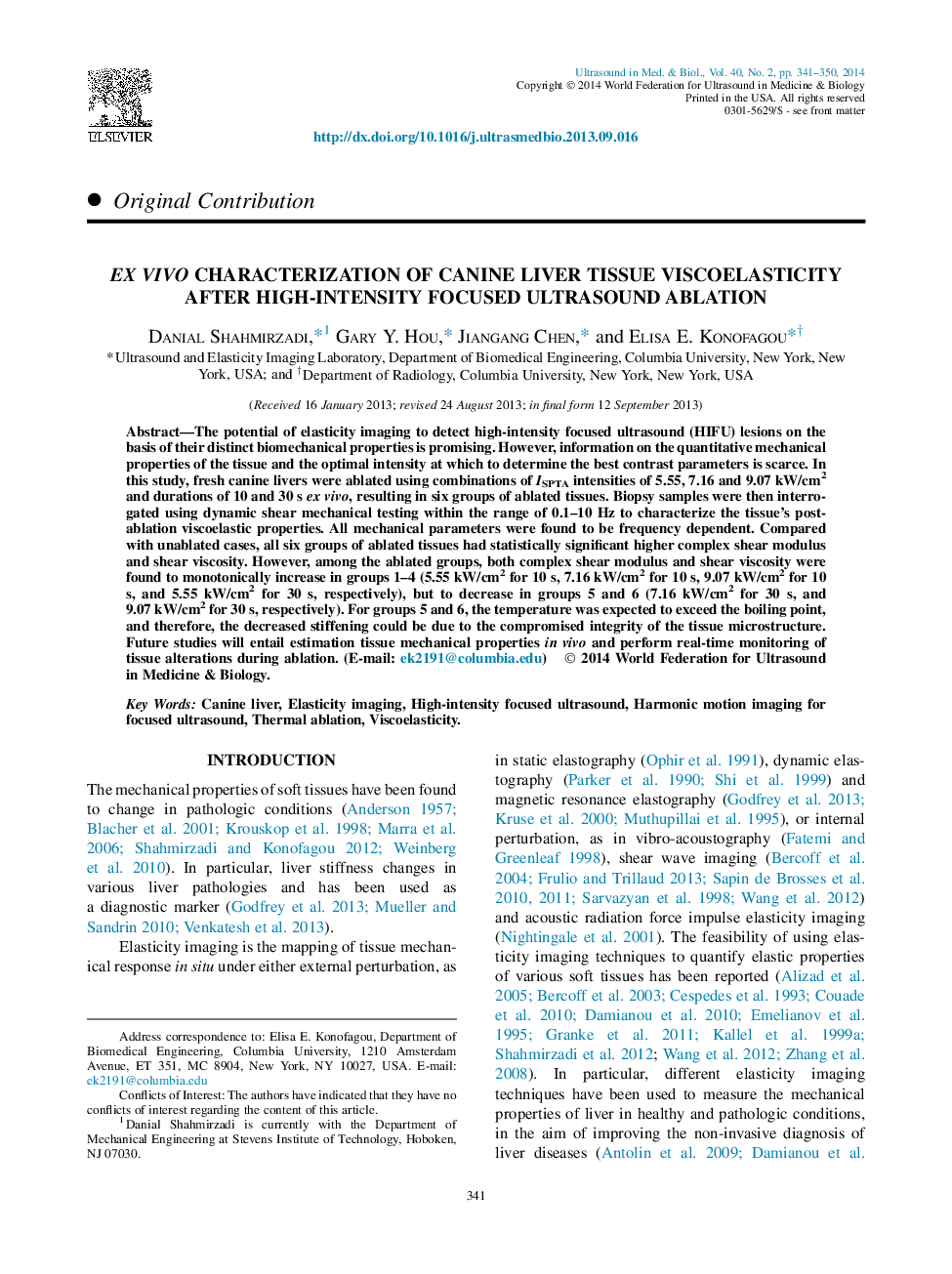| Article ID | Journal | Published Year | Pages | File Type |
|---|---|---|---|---|
| 1760546 | Ultrasound in Medicine & Biology | 2014 | 10 Pages |
Abstract
The potential of elasticity imaging to detect high-intensity focused ultrasound (HIFU) lesions on the basis of their distinct biomechanical properties is promising. However, information on the quantitative mechanical properties of the tissue and the optimal intensity at which to determine the best contrast parameters is scarce. In this study, fresh canine livers were ablated using combinations of ISPTA intensities of 5.55, 7.16 and 9.07 kW/cm2 and durations of 10 and 30 s ex vivo, resulting in six groups of ablated tissues. Biopsy samples were then interrogated using dynamic shear mechanical testing within the range of 0.1-10 Hz to characterize the tissue's post-ablation viscoelastic properties. All mechanical parameters were found to be frequency dependent. Compared with unablated cases, all six groups of ablated tissues had statistically significant higher complex shear modulus and shear viscosity. However, among the ablated groups, both complex shear modulus and shear viscosity were found to monotonically increase in groups 1-4 (5.55 kW/cm2 for 10 s, 7.16 kW/cm2 for 10 s, 9.07 kW/cm2 for 10 s, and 5.55 kW/cm2 for 30 s, respectively), but to decrease in groups 5 and 6 (7.16 kW/cm2 for 30 s, and 9.07 kW/cm2 for 30 s, respectively). For groups 5 and 6, the temperature was expected to exceed the boiling point, and therefore, the decreased stiffening could be due to the compromised integrity of the tissue microstructure. Future studies will entail estimation tissue mechanical properties in vivo and perform real-time monitoring of tissue alterations during ablation.
Related Topics
Physical Sciences and Engineering
Physics and Astronomy
Acoustics and Ultrasonics
Authors
Danial Shahmirzadi, Gary Y. Hou, Jiangang Chen, Elisa E. Konofagou,
